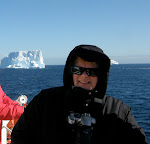Prof. Dr. Volkmar Fritz died on August 21, 2007 at the age of 69 in Bad Schwartau, Germany, after a long battle with Parkinson’s disease. He is survived by his devoted wife, Anke, and four children.Volkmar came to Israel in 1964 after having completed his theological studies in Tübingen, Berlin, Heidelberg, Bonn and Marburg, where he earned his Ph.D. in 1968. Interested in researching the Land of the Bible and the material culture of ancient Israel, he studied Biblical Archaeology at the Hebrew University of Jerusalem. His archaeological supervisor was Prof.Yohanan Aharoni, and under his direction, Volkmar served as an Area Supervisor in the excavations at Arad in the Negev from 1965-1967. The results of that excavation became the central part of his Habilitation, which he earned from the University of Mainz in 1973, where he joined the faculty and was responsible for teaching Old Testament Studies. He was also instrumental in building and expanding the university’s library, making it one of the best in Europe in the field of Biblical Archaeology. Later, he was appointed as full professor in Old Testament at the University of Giessen.
Volkmar was committed in his research to applying archaeological data to the German tradition of biblical analysis, and as a result he made a significant contribution not only to combining the two disciplines, but also to creating a greater understanding between German and Israeli archaeologists. He was the first German scholar after the Second World War to obtain a license to conduct an excavation in Israel. Together with his Israeli colleague, the late Prof. Aharon Kempinski, he directed the excavations at Tel Masos in the Negev from 1972-1975, which made a major contribution to our understanding of the early history of ancient Israel.
Subsequently, he directed the excavations of Tell el-Oreme/Tel Kinrot on the northwestern shore of the Sea of Galilee from 1982-1985 and conducted two small digs at Feinan in Jordan in 1990. During his tenure as Director of the German Protestant Institute of Archaeology on the Mount of Olives in Jerusalem from 1994-1999, he returned to his dig at Tel Kinrot. These excavations demonstrated that the site was one of the largest towns in ancient Israel in the Iron Age I, and provided important evidence for the Neo-Assyrian conquest of northern Israel in 733 BCE.
In 2003, he returned to Tel Kinrot for a visit, but he was already greatly weakened by the Parkinson’s disease that had begun a few years previously. Although he was unable to excavate again himself, he was happy in the knowledge that the work he had begun would go on in the hands of his former students from Switzerland, Germany and Finland, who are now responsible for the Kinneret Regional Project.
While Volkmar published a myriad of articles on various aspects of the archaeology of ancient Israel, a major focus of his research was on the architecture of public buildings, temples, palaces and domestic housing. Two of his most important publications dealt with these subjects: The City in Ancient Israel and An Introduction to Biblical Archaeology, both of which appeared in German and in English. To his credit, nearly all of his excavations have been fully published – like his reports on Kinneret: Ergebnisse der Ausgrabungen auf dem Tell el-Oreme am See Gennesaret, 1982-1985 and Ergebnisse der Ausgrabungen auf der Hirbet el-Msas (Tel Mašoš) 1972-1975 (co-authored with Prof. Kempinski). In addition, his last excavations, which were only begun 10 years ago, will be published in the near future. He was not only a productive archaeologist, but also wrote important commentaries on the Old Testament, like Das erste Buch der Könige.
Volkmar’s warmth, kindness and fine sense of humor greatly endeared him to all his friends. He gave generously of his knowledge and experience and took great pleasure in the successes of his students. He left an indelible mark on the field of Biblical Archaeology, and will be sorely missed by his colleagues and students.
Thomas Harding Letter
5 years ago

































No comments:
Post a Comment